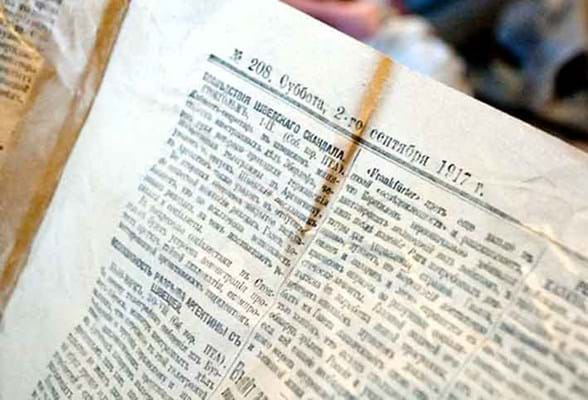The opening of a walled-up niche between the second and the third floor of the Trubetskoi-Naryshkin mansion on Ulitsa Chaikovskogo in the city centre revealed more than 40 sacks of predominately late 19th century and early 20th century silver, jewellery, orders, coinage and stacks of documents. The value of the find, announced on March 28, is likely to run into millions of dollars.
To this day, Russia's former imperial capital St Petersburg is alive with rumours of untold treasures hidden by Russian aristocrats and business tycoons as Russia careered towards Bolshevism - and discoveries are not unheard of.
But this cache, found in a previously undetected storage space between two floors, ranks as spectacular. It includes three silver dinner sets of over 1000 pieces each from 1872, 1914 and 1915, most carrying the crest of the Naryshkins, descendents of Nataliya Naryshkina, the second wife of Tsar Alexis and the mother of Peter the Great.
The family lived in the house from 1875, when Duke Vasily Naryshkin acquired the two connected 18th century properties, but fled Russia on the eve of the October Revolution. Many of the objects were wrapped carefully in newspapers dated from March, June and September of 1917. Some of the larger items, including a group of silver and gilt samovars, were wrapped in cloth soaked in vinegar to prevent oxidisation.
Members of the city's Committee for State Control, Use and Protection of Historical and Cultural Monuments are currently taking an inventory of the hoard while local police, who were informed of the discovery more than 24 hours after it was made, may also seek to prosecute workers who had attempted to hide some of the treasure from the authorities.
Three parcel-gilt trays and flatware engraved with Naryshkin crest were reportedly found hidden in sacks of construction rubble outside the building.
Documents accompanying the find may shed light on who might have secreted the treasure at the time of the Revolution. A 1908 student card from the Imperial College and a certificate of the White Eagle Order from 1915 carry the name of family member First Lieutenant Sergey Somov who fled to Paris in 1917.
After the Bolsheviks nationalised private property, the Naryshkin home was turned into a stolovaya, a canteen serving simple meals to city workers. Following the collapse of the Soviet Union, the building became private apartments but was recently purchased for conversion into a conference and cultural centre. The new facility has been suggested as a fitting place for the hoard to be displayed but the issue of proper title is yet to be resolved.
According to Russian law, that operates something equivalent to the Treasure Trove law, the find should be divided into equal parts between the owner of the property on which it was found and the person or people who found it.
However, if the objects discovered are identified as having cultural or historical value, they will be given to the state and the owner and those who found them will receive a monetary value of the treasure.
It has been reported that the last members of the Naryshkin dynasty died in France in the mid 20th century.








